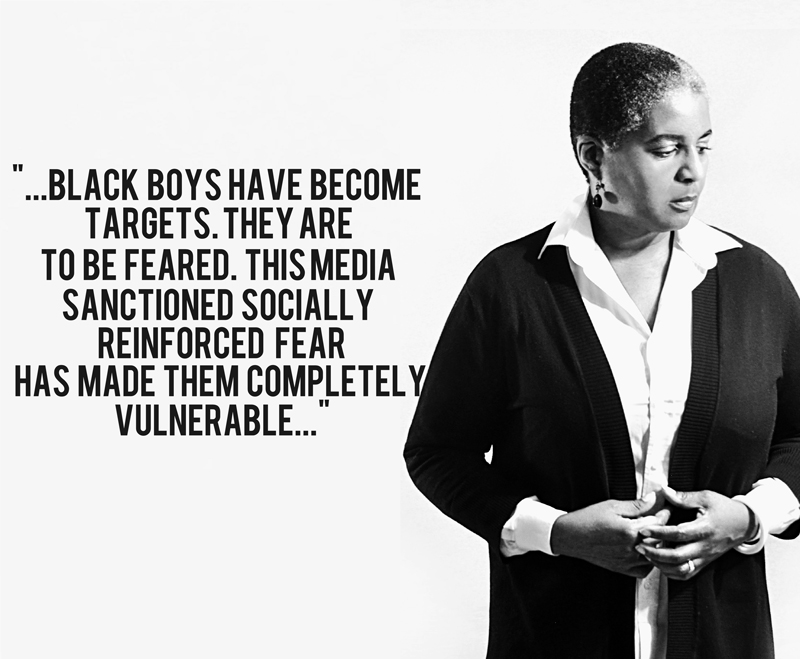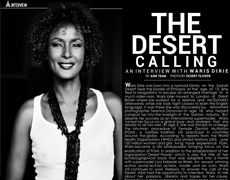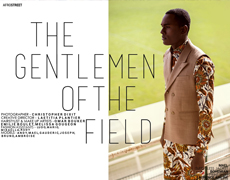ASM: The focus of your research has focused on the damaging history of mass media in its artificial construction of black identity. In your latest book you've demonstrated how a narrative of fear unmoored from facts can drive real events and change policy with devastating effects.
NB: For me it is a case study and I like that you are framing it that way. The idea that there was this group of kids that set about to go wilding, as well as the definition of the very term really came out of some relation between the police and the press. I have come to the conclusion from my research and my many years in the press that in many cases the police serve as the first set of editors for the press- they get to make the decision about what is advanced to the media and what is important about a story that needs to be publicized. They have a powerful roll generally, and in this particular case they had gone about the business of creating this new phenomena according to the Police messages, these young kids are involved in a new and dangerous phenomena representing the latest thing that we have to fear, according to the police messages, all of our safety is being jeopardized, should we dwell in urban areas, and all of this has been built around this case involving interracial rape which remains a touchstone of American fear. This story grows to enormous proportions and it consumes the lives of these five kids and their families. What becomes more compelling to me is that these kids are a part of this story concocted by police and passed onto the press about what they think happened in the park that night- and from this you get a clear and concocted image of primal American fear that spreads across the country, and from this story, states begin changing their laws. By the time this case was tried, juvenile justice laws across this country are incorporating more kids; more minors into the adult court system. We get this sweeping transformation of juvenile justice laws based on something that we now know didn't happen the way the police claimed it happened. You have a kind of special relationship, a kind of collaboration between the press and the police when it comes to crime reporting. What becomes a reliance on the police becomes a divestment of the independence of the press.
ASM: Has this kind of media construction participated in shaping the experience of black boyhood?
NB: Black boys have become targets, they are to be feared, but at the same time this media sanctioned, and socially reinforced fear has made them completely vulnerable. It becomes ok and acceptable to say that my fear and my preconceived notions about what this child may be up to makes it “ok” to use deadly force.
ASM: What is the message to the boys themselves? Is there a danger of internalizing these narratives and learning to participate in enforcing this kind of psychological brainwashing?
NB: These children who are told they are dangerous and are taught there is no right or decent way to be who they are. I think there is a fair amount of internalization going on. Young people sometimes develop an affect in language or in style, in superficial ways that acknowledge participation in denigration of who they are. I think this can be framed in a larger sense: people buy into this notion of blackness not just based on any single story but on a climate saturated with repeated stories about how dangerous this particular group is, and not just dangerous within their own communities but dangerous to everybody else. When attuned to what may start as fiction, society looks for cases (no matter how rare) that seem to agree with these notions. These same thuggish images that are used in the news stories to enforce the climate of fear, then strangely, eventually are the images end up showing up in popular culture, and people starved for a reflection of themselves end up may end up internalizing these dispositions in a myriad of ways. These images become a part of the general framework, that we all reference and use to communicate and to makes sense of reality whether their roots are based in reality or not. Eventually it is as if there are no other options for frameworks through which to understand our behavior and character.

ASM: What are some things we can do to begin neutralizing some of these twisted and damaging archetypal frameworks? NB: We have to fight for balance. That is one of the things important for those of us who are concerned with the power and potential of the media when involved. We just cannot have varying degrees of one type of image define us. We have to make sure that people get to see us in various ways, because we as Africans and African Americans in a community that is as diverse and nuanced as any other community in terms of our interests, our skills, our accomplishments and our ambitions, are yet to be at that stage as far as our representations in the media are concerned where the positive end of the spectrum is focused on what are perceived as exceptions: such as the idea of firsts as in the first black. It is as though that single person represents a rare exception to the given narrative. I am not saying that those stories are irrelevant, because they do, in some areas, illustrate how progress in integrating society is very slow. But there are so many of us that are so accomplished in so many areas who persist in their work, yet there stories never come out to the point where they shift the discussion on what it means to be black. Moreover those people as sources of information, as direct influencers of the narrative seem to be limited to a single side or race issues, while changing public opinion relies on having influence in areas ranging from economics, science and geopolitics. It is when they turn to us, as much as anybody else for any type of story covered, there will begin a shift in societies perception of our character and our internal lives.
ASM: How would you reach out to someone who was generally a good person but was at the same time utterly convinced that they had to fear these black boys?
NB: I want people to know how much of this perceived difference between us has been constructed. The problems poor blacks have are the same problems that poor whites have. The blacks operating at the highest levels of society have the same problems their white counterparts have. When we create this notion of there being an essential difference - that blacks are somehow particularly different, creates an additional burden for blacks of breaking through the walls these assumptions create. If you step away from that you get to the realization that we are all challenged to get through life in the most meaningful way possible in order to be the best we can be - and we are all striving for that. I think one of the most important things to struggle with in the media is to make sure that we are all understand the shared common humanity. Our goal should be to remain focused on that, because when we do, we will begin to unravel some of these damaging fixtures we have developed around race, around class and around gender that have been built up and have been destroying us.
Dr. Natalie P Byfield is the author of Savage Portrayals.




